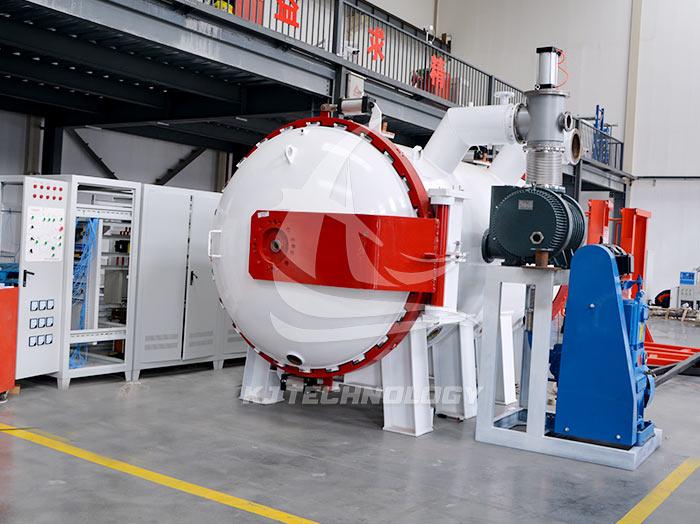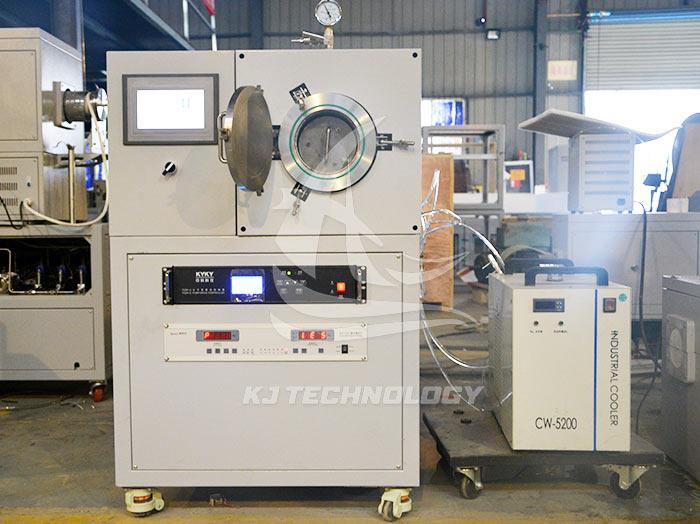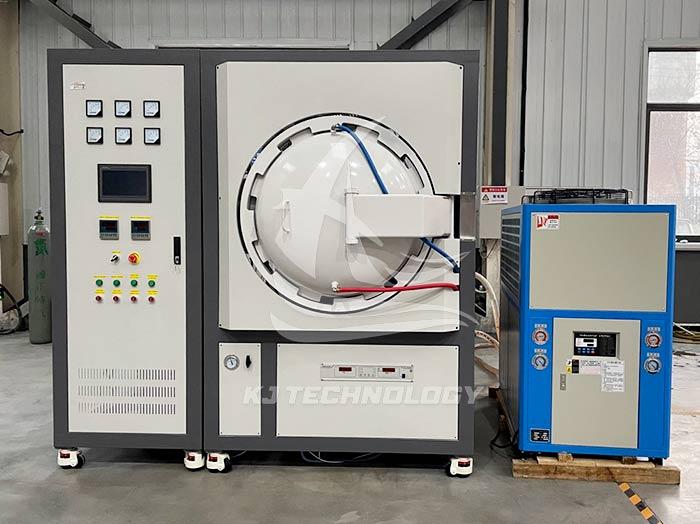Can a high vacuum and high temperature muffle furnace be used for annealing?
 09-16-2025 Author: KJ technology
09-16-2025 Author: KJ technology
The high vacuum and high temperature muffle furnace can be fully used for annealing treatment and has significant advantages under specific material and process requirements. The following is a detailed analysis:
1. The core characteristics of high vacuum and high temperature muffle furnace and its compatibility with annealing process
Advantages of vacuum environment
Avoid oxidation: The vacuum degree can reach below 10 ⁻ Pa, effectively isolating active gases such as oxygen and water vapor, preventing metals from oxidizing or forming oxide films at high temperatures, especially suitable for easily oxidizable materials such as titanium alloys, stainless steel, and high-temperature alloys.
Reduce decarburization: In a vacuum environment, the diffusion of carbon is suppressed, which can prevent decarburization on the surface of steel parts and maintain the surface hardness of the material.
Surface purification: A vacuum environment helps to remove gases and impurities adsorbed on the surface of materials, improving surface quality.
High temperature control capability
Wide temperature range: typically up to 1200 ℃ -1800 ℃, or even higher, to meet the annealing temperature requirements of most metals (such as steel, copper, aluminum) and non metals (such as ceramics).
Temperature uniformity: Through three-dimensional heating design and thermal field optimization, the temperature gradient inside the furnace can be controlled within ± 5 ℃ to ensure uniform annealing of the workpiece.
Flexibility in atmosphere control
Can be filled with protective gas: Some high vacuum muffle furnaces are equipped with gas filling systems, which can introduce inert gases such as argon (Ar) and nitrogen (N ₂) during the annealing process to further suppress oxidation or achieve specific reactions (such as carburizing and nitriding).
2. Application scenarios of high vacuum annealing
Annealing of metal materials
Eliminating internal stress: Metal workpieces (such as molds and shafts) that have been welded, forged, or cold worked can be relieved of residual stress through vacuum annealing to prevent cracking or deformation.
Improving organizational structure: By controlling the annealing temperature and time, the grain size can be refined, the composition can be uniform, and the plasticity and toughness of the material can be improved. For example, annealing titanium alloys (such as TC4) under vacuum can eliminate the beta phase and optimize their mechanical properties.
Softening materials: For cold-rolled steel plates, copper strips, etc., vacuum annealing can reduce hardness and facilitate subsequent processing (such as stamping and stretching).
Annealing of non-metallic materials
Ceramic materials: Ceramics such as alumina (Al ₂ O ∝) and silicon nitride (Si ∝ N ₄) can be annealed under vacuum to eliminate sintering stress and improve fracture toughness.
Semiconductor materials: Semiconductor materials such as silicon (Si) and silicon carbide (SiC) can remove impurities, repair lattice defects, and improve electrical performance during vacuum annealing.
Special process requirements
Annealing of magnetic materials: Annealing neodymium iron boron (NdFeB) permanent magnetic materials under vacuum can optimize the magnetic domain structure, improve coercivity and remanence.
Annealing of optical elements: optical materials such as fused silica and calcium fluoride (CaF ₂) can reduce internal stress, improve transmittance and damage resistance threshold during vacuum annealing.
3. Example of High Vacuum Annealing Process Parameters
Scenario: Vacuum annealing of TC4 titanium alloy (Ti-6Al-4V) rod to eliminate cold working stress.
Process steps:
Furnace loading: Place the rod on the alumina ceramic support to avoid contact with the furnace wall.
Vacuum pumping: Start the mechanical pump and diffusion pump to pump the vacuum degree inside the furnace to 5 × 10 ⁻⁴ Pa.
Heating up: Heat up to 650 ℃ at a rate of 5 ℃/min and hold for 2 hours.
Cooling: After cooling to below 200 ℃ in the furnace, fill high-purity argon gas (99.999%) to break the vacuum and remove the workpiece.
Result: The hardness of the rod decreased from HV380 to HV220, residual stress relief increased, and there was no oxidation on the surface.
4. Precautions
Equipment selection: Choose a muffle furnace with appropriate furnace chamber volume and heating power based on the size of the workpiece and process requirements.
Temperature calibration: Regularly calibrate the furnace temperature using standard platinum rhodium 10 platinum thermocouples to ensure temperature control accuracy.
Safe operation: Strictly follow the operating procedures during vacuum annealing to avoid high-temperature burns or vacuum system failures.
Process optimization: Determine the optimal annealing temperature, time, and vacuum degree through orthogonal experiments to balance cost and performance.








